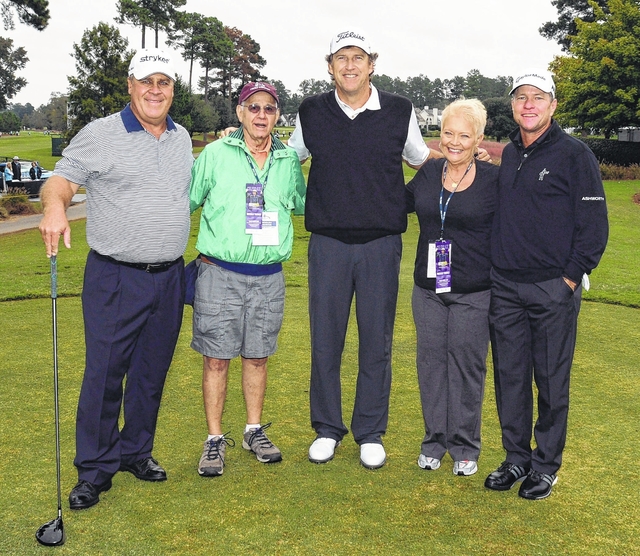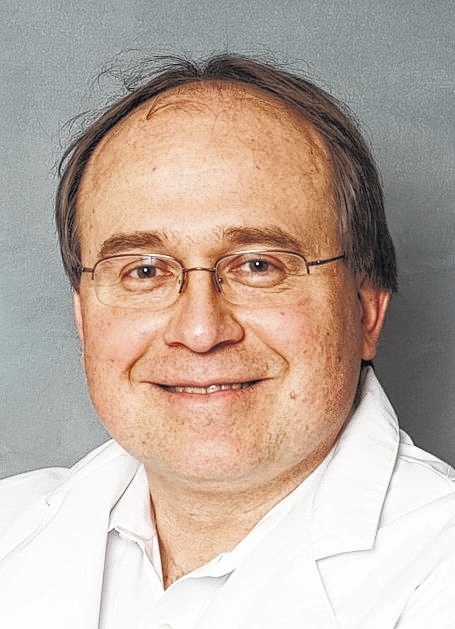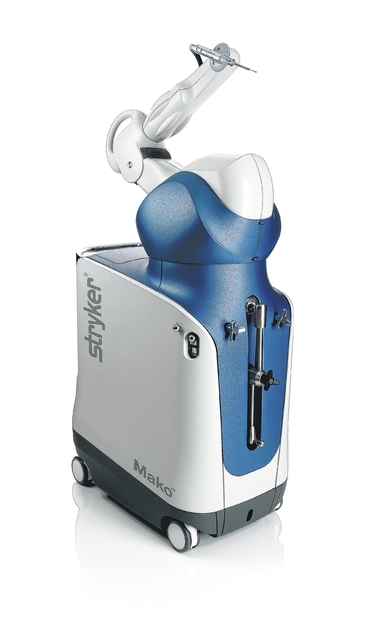For Ethyl Zabel, there was a time when going to the grocery store and coming back home was a challenge.
“It’s amazing when your knees hurt, how much a gallon of milk can increase in weight,” Zabel said about her previous pains. “The quality of life just wasn’t the same.”
But thanks to technology and the help of Stryker Mako Robotic-Arm Assisted Technology, that all changed. The technology gives doctors the ability to perform surgeries with precision. In Zabel’s case the process helped her with arthritis problems.
“I’m bionic now,” Zabel said with humor.
Zabel suffered through knee pain for many years and took a lot of cortisone shots, which are designed to help relieve pain. But it did not help. After retiring, she heard about orthopedic surgeon Dr. Andrew Bush, and Central Carolina Hospital in Sanford. “I went to see him, thinking I was going to get more cortisone shots and after examining my leg, he told me that I would be a great candidate for the partial knee replacement,” Zabel said.
In fact, the surgery went so well, Zabel couldn’t believe it.
“After six weeks, you’re pretty much walking around like you normally would, being very careful that is,” Zabel said.
A full knee replacement may come with difficulties because of the location of the bones which are exposed during surgery.
“When we make our cuts it’s very accurate,” Bush said. “But what’s more easier for surgeons, is more problematic for patients. The patient has to heal everything that we peeled of the bone.”
It’s the reason why the healing process takes a long time.
During partial knee replacements, surgeons are just exposing a part, which has to be replaced. In the healing process, it’s a little better for patients, but for doctors and surgeons it can be difficult.
“You can’t see,” Bush said regarding the process of making sure knee parts are arranged correctly. “A lot of times it’s not done correctly.”
Down the road, Bush mentioned how patients with partial knee replacement may still have issues because they feel pain, not from the alignment, but from the condition of being unaligned. Through the robotic-arm assisted process, Bush described how a lot of problems are eliminated through CT Scans (computerized tomography), a method of making multiple X-ray images of body parts. Bush said his goal is to have their knee the same as it was before they had physical problems.
“If the patient was a little bowlegged before they have developed arthritis, they are going to be bowlegged after I do surgery,” he said about restoring the original anatomy of the patient. “My idea is not to make them straight, but to make them back to where they were.”
Bush described it as incredible and gives patients an option to having a full knee replacement. The partial knee surgery gives surgeons a way of relieving pain and symptoms in addition to having a quicker recovery. Afterwards, they’re able to get back to activities they enjoy.
He recalled one patient who had a full knee replacement in one leg and a partial in the other. Bush said it was a night and day difference for him.
“He’ll tell you that he’s happy with his knee replacement, but it’s not his knee,” Bush said. “With the partial, it feels like he never had the surgery. That’s really the neat thing about this.”
As a private practitioner, Bush never performed a partial knee surgery by hand because he was afraid of not completely healing the patient.
“The Stryker Mako Robotic-Arm Assisted Technology is fantastic,” Bush said. “It really does allow a physician to offer a whole subset of patients a new form of treatment and to improve their quality of life.”
Recently, Zabel celebrated nine weeks away from her recovery. Currently, she’s still doing physical therapy, but it has nothing do with doctors.
“My physical therapy now is taking care of the yard and the animals,” she said with cheerful chuckle.
Along with North Carolina resident and patient George Bejian, Zabel enjoyed walking inside the ropes of the SAS Championship in Cary as honorary observers on Oct. 10. The participation was made possible through Stryker Orthopedics.
“I walked 12 holes at the SAS tournament, so I did pretty good,” Zabel said about walking through the course. “It was an experience because it was the furthest I walked since my last surgery.”
She also remembered a moment when she cried after playing and spending time with her granddaughter … and it was a good moment.
“We did grandma things,” Zabel said. “It has been so long I had been able to feel like that. It’s amazing. It’s absolutely a blessing.”



